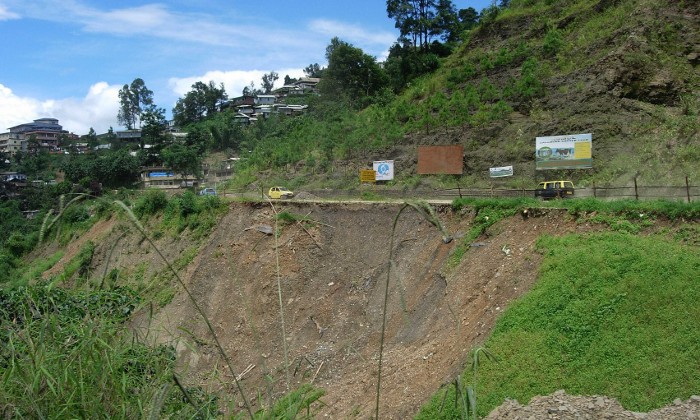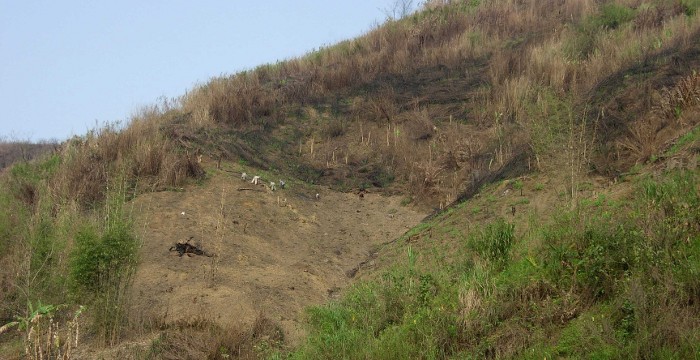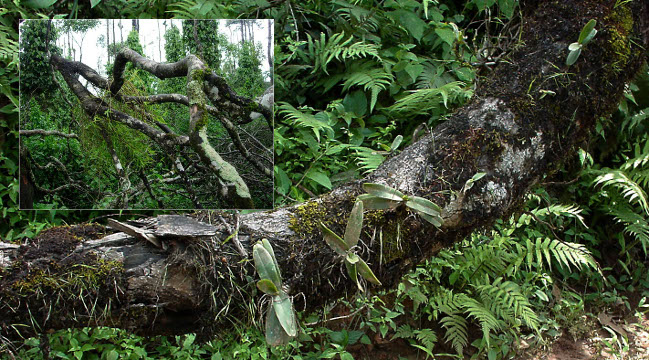Orchid Conservation
K. S. Shashidhar
Orchids were on this planet long before human beings arrived. Orchids and epiphytes have a definite role to play in the ecosystem. Their vital function as an integral component helps in sustenance of the ecosystem making orchids an ecologically, environmentally and commercially a very important group among the flowering plants. Presence of epiphytes (including orchids) in an ecosystem indicates healthiness of an ecosystem. They are highly vulnerable group of plants and are sensitive to slightest disturbances to their primary habitats. Orchids are known to be highly evolved plant species and are site specific, indicating specific site conditions to thrive. This is despite the fact that they are literally distributed in the entire world in different ecosystems except in Polar Regions.
In nature orchids occur in populations and variability occurring within a ‘population’ of orchid species is often termed as ‘gene pool’ or ‘gene bank’. This variability parameter is an asset to an orchid breeder for breeding programmes to produce hybrids possessing desirable characters or combination of characters. Protection of these unique plants is essential to maintain and preserve distinctive populations of the species along with their genetic variation in their natural habitats.
Reckless collection of species from the wild has done immense damage to its population. The striking, attractive and showy flowers and their unusual forms were the first casualties. Hooker who visited Khasi hills of Meghalaya in 1847 had found abundant Vanda coerulea plants with its beautiful azure flowers but is a rarity now. An English Botanist wrote in 1878 ” Not satisfied with taking 300 or 500 specimen of fine orchid, they must scour the whole country and leave nothing for miles. This is no longer collecting; this is wanton robbery”.

Orchid hunting has become a perilous business for botanists. Paphiopedilum fairreanum was known as ‘lost orchid’ as its distribution in the Indian sub continent could not be traced. Competition between orchid dealers to locate and collect this species as well as another lady slipper orchid Paphiopedilum spicerianum resulted in over collection of these plants in thousands. In Brazil, huge plantations of sugarcane have resulted in loss of habitat of Cattleya. It was observed that one could go and collect Cattleya loddigesii and Oncidium varicosum in truck loads form the Brazilian forests during this period. There is numerous such examples recorded and equal number or more have gone unnoticed. Large scale collection of wild species by amateur collectors, commercial people is one of the main reasons for diminishing orchid population. Coupled with this, the major concern and the issue which needs attention is the loss of habitat of these unique plants and its associated biota.
Deforestation, fragmentation of habitat due to various anthropogenic pressures has done an irreparable damage not only to the orchid flora but also to the associated biota in the ecosystem particularly insects. Jhuming (slash & burn cultivation) in North East is one of the major concerns which has resulted in loss of several species and its habitat. Fire, floods and general pollution and an imbalance in the ecosystem have all resulted in diminishing orchid flora. Endemism in orchids has also resulted in further vulnerability resulting in loss of the species. If sufficient awareness with regard to conservation is not created there is every possibility of permanently losing several orchid species in large numbers. The over enthusiasm and never ending demand for orchid species has resulted in several species becoming rare and extinct.

Orchids flowers are generally pollinated by diverse pollinators such as bees, butterflies, diurnal and nocturnal moths, beetles and even hummingbirds. This association and interdependence between orchids and their pollinating agents is mutual. Orchid survival depends on specific pollinators. Interdependence of various biotas in the ecosystem is a very delicate and sensitive phenomenon. With the shrinkage of habitat and fragmentation, support for the pollinators will be affected in turn the regeneration of the orchid species. The population may dwindle even though there may be adequate habitat left for these plants to grow in the absence of these pollinators. This emphasises the need for conservation of habitat in totality rather than a piece meal approach.

Human intervention for his own benefits without considering the ecological dimension by way of developmental projects such as Teesta Dam project in North Bengal has resulted in species such as Paphiopedilum venustum being eliminated from the site. About 50 native orchids are known to be either rare or entered into extinct phase. Few of the genera whose some of the species have fallen in this category are Cymbidium, Dendrobium, Paphiopedilum, Vanda. Anoectochilus roxburghii, Cymbidium elegans, Dendrobium chrysotoxum, Paphoipedilum insigne, P. fairreanum, P.venstum, Pleoine humilis (Sm.) and Vanda coerulea. This list could be much longer with the passage of time.
Read the second and concluding part of the series here